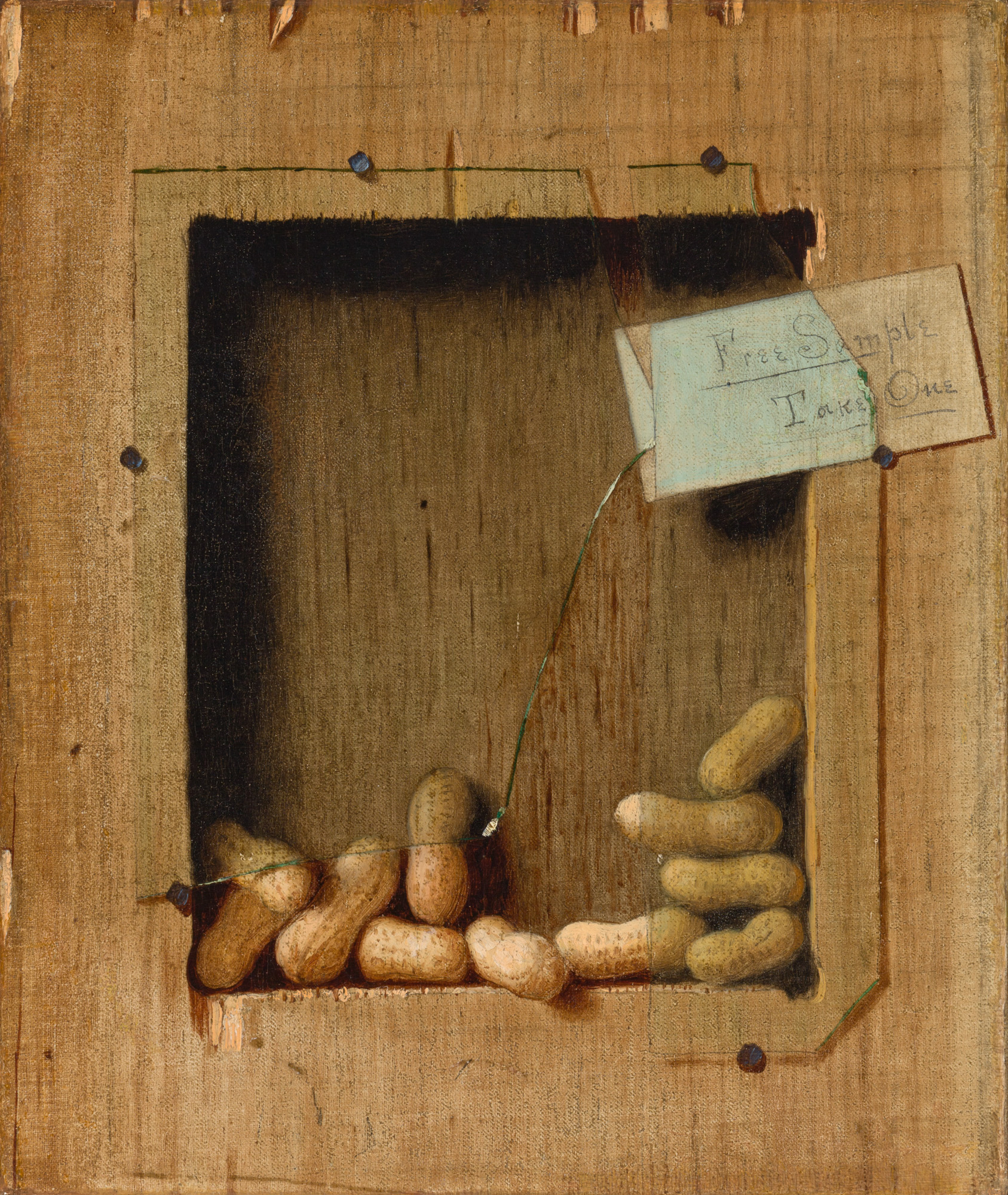De Scott Evans
Essay excerpt taken from A Private View – American Art from the Manoogian Collection, Yale University Art Gallery written by Bethany Astrachan
For centuries, trompe l’oeil painters have depicted objects displayed in shallow recessed spaces that might serve as cupboards or shelves. By limiting the illusion of depth, the painter can portray objects parallell to the picture plane, and the subject matter in turn, appears to be part of reality, projecting forward into the viewer’s space. In Free Sample, Take One, the flat, vertical wooden panel and its cut-out rectangular niche create the same shallow pictorial depth. One peanut is foreshortened and dangles beyond its narrow shelf, challenging the viewer to nudge it back into place. The broken glass and the card with its witty invitation is another way in which Evans tempts the viewer, yet the entire configuration makes him uneasy. The viewer assumes that at one time the niche was filled with peanuts, but when the glass was broken most of the nuts slipped out. Now the jagged edges of the broken glass and the possibility that the rest of the peanuts, too, will fall out of their container give the composition an unsettling but dynamic quality.
Free Sample, Take One is one of about twenty trompe l’oeil still-life paintings by Evans that incorporate the motif of the edible nut. Paradigmatic in form and content, the painting is a depiction of eleven peanuts set inside a hollow rectangular niche cut into a wooden plank. A broken glass panel, held in place by six nails, partially covers the niche’s opening. In the upper right corner, a card is inserted with the hand written message “Free Sample, Take One.” With meticulous detail, Evans has captured the subtle qualities of his subject matter: the raw, blond wood, splintered and peeling; the rough surface of the rustic container; the back panel of the niche stained in a darker tone and streaked in the areas where the wood has split. In contrast to the rough-hewn quality of the wood, the green-tinged glass cover is smooth and slick, the sharp jagged edges shining in the reflected light. Evans other nut paintings are similar to this one — depictions of peanuts or almonds in a shallow wooden niche covered by broken glass panel. These works are sometimes signed with the pseudonym S.S. David, and most are undated; two recorded examples that do bear dates are marked 1890 and 1891, when Evans was working in New York.
De Scott Evans
Free Sample, Take One
Oil on canvas
12″ x 10 1/4″
Provenance
James Maroney, New York, NY
Manoogian Collection, acquired from the above in 1980
Private Collection, Michigan, acquired from the above in 2019

